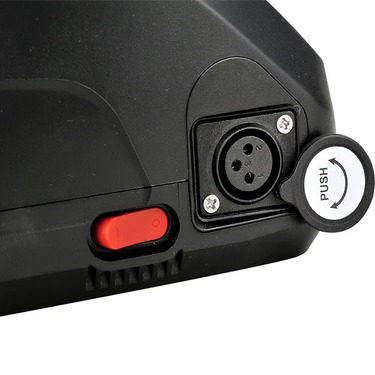Together for An Electric Future.
In the field of transportation today, the penetration rate of electric bicycles (E-Bikes) is increasing. One of the core components of electric bicycles is the E-bikes battery, which directly affects the performance, mileage and service life of the vehicle. Choosing the right battery is crucial to enhancing the riding experience.
Lithium-ion batteries are one of the most common battery types in electric bicycles today and are widely favored for their high energy density, light weight and long cycle life. This type of battery is typically composed of lithium-ion polymers or lithium-ion cobaltates that provide an efficient, stable energy output. Its advantages include high energy density, lightweight design, fast charging, and long life. However, the cost of lithium-ion batteries is relatively high and there are certain safety risks, so they need to be used and maintained carefully.

Lithium-polymer batteries are a variant of lithium-ion batteries that are thinner and more flexible, making them suitable for devices with high volume and weight requirements such as electric bicycles. This type of battery is increasingly used in electric bicycles, and its advantages include higher energy density, lighter design and longer service life. However, lithium polymer batteries are expensive and require specialized management and maintenance to ensure safety and performance.
Lead-acid batteries are a traditional battery type that is still widely used in some low-end or inexpensive electric bicycles. This battery type has a lower energy density and a shorter service life, but its advantages are lower cost, simple maintenance and high reliability. However, lead-acid batteries have a larger weight and volume, and a longer charging time, so they are not as good as lithium-ion batteries and lithium-polymer batteries in terms of performance and portability.
Lithium titanate battery is a new type of battery technology, with higher safety, longer life and faster charging speed. This type of battery is used more in some high-end electric bicycles, and its advantages include high temperature safety, long life and stable performance. However, due to its relatively high cost, the penetration rate in the market is relatively low at present.
The choice of electric bicycle battery depends on a number of factors, including performance requirements, budget constraints, and personal preferences. Consumers should consider various types of batteries according to their needs and budgets, and choose the most suitable electric bicycle battery for them to ensure a comfortable and safe riding experience.
Related to RHY battery type and performance are battery management systems and charging technologies.

Electric bicycle battery management system is a key component of controlling and monitoring battery performance. BMS can monitor battery voltage, current, temperature and other parameters in real time to ensure that the battery is in a safe and stable working state. At the same time, BMS can also realize the charge and discharge control of the battery, extend the service life of the battery, and improve the performance and safety of the battery. When choosing an electric bicycle battery, consumers should pay attention to the quality and function of the BMS system to ensure the safety and reliability of the battery.
Charging technology is one of the important factors affecting the use experience of electric bicycle batteries. Different charging technologies and charging devices will affect the charging speed, charging efficiency and charging cycle of the battery. Some advanced charging technologies, such as fast charging and intelligent charging, can significantly improve the charging speed and efficiency of the battery, shorten the charging time, and improve the charging efficiency. Therefore, when consumers buy electric bicycles, they should consider the advanced degree of charging technology and the quality of charging equipment in order to obtain a better charging experience.